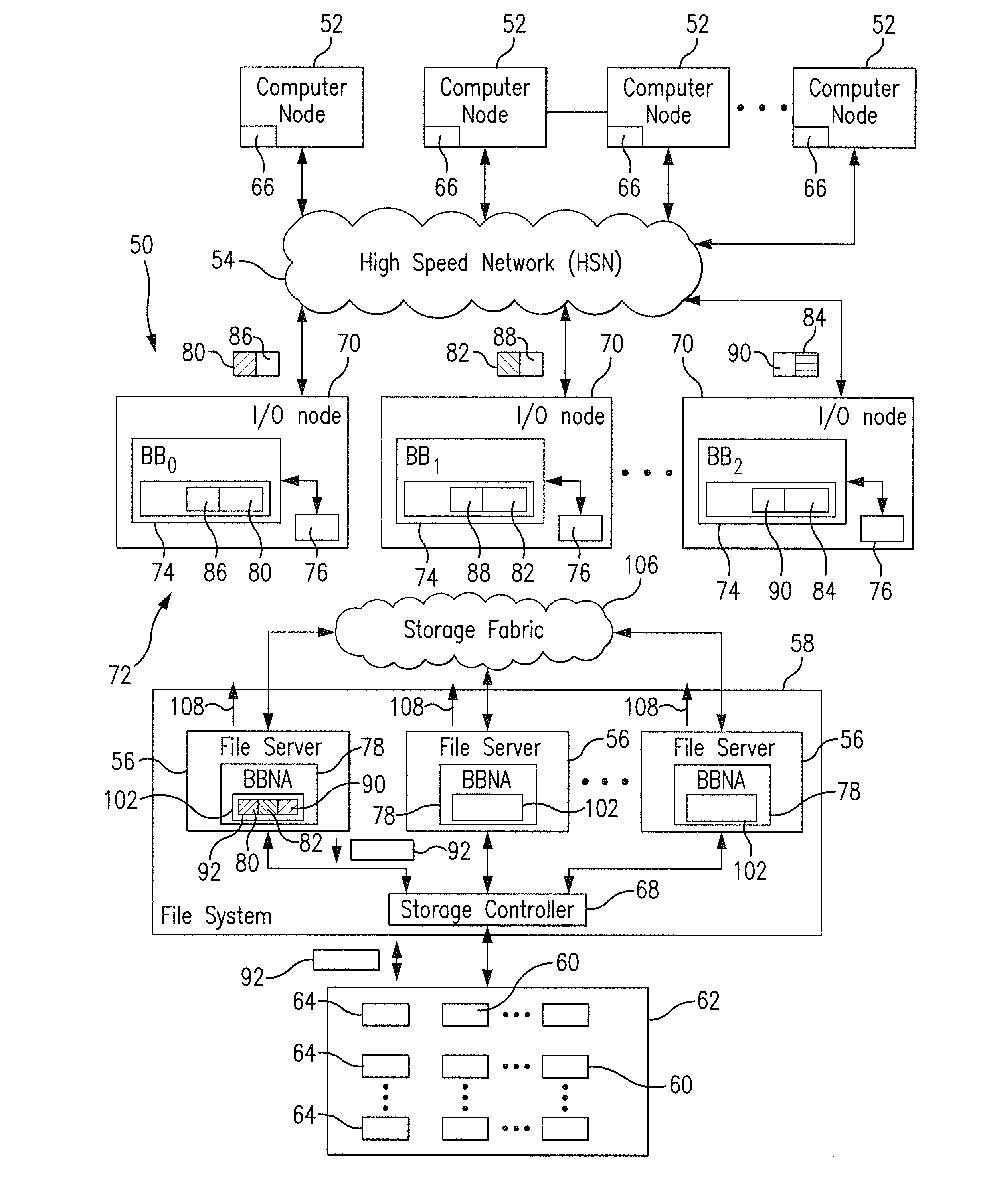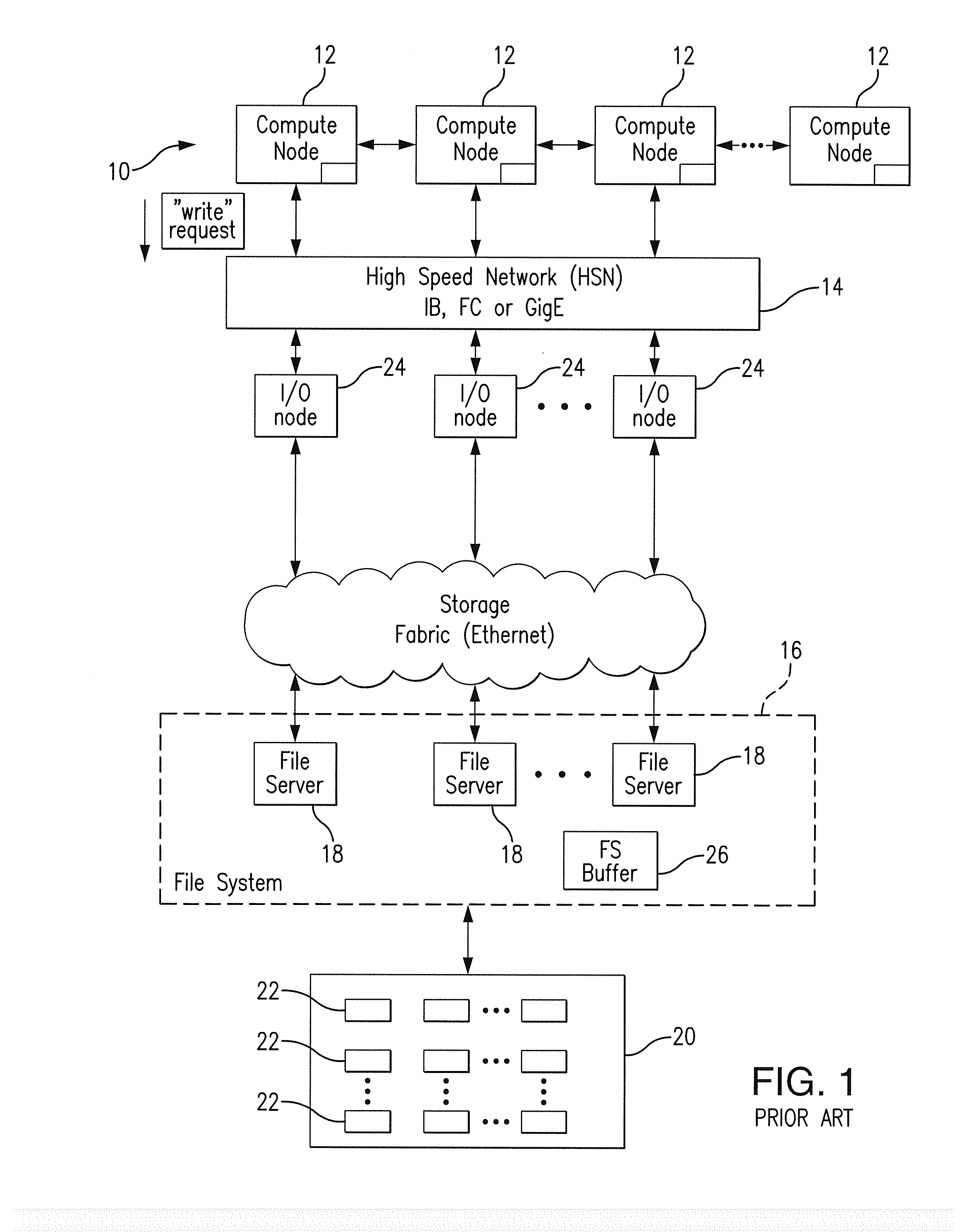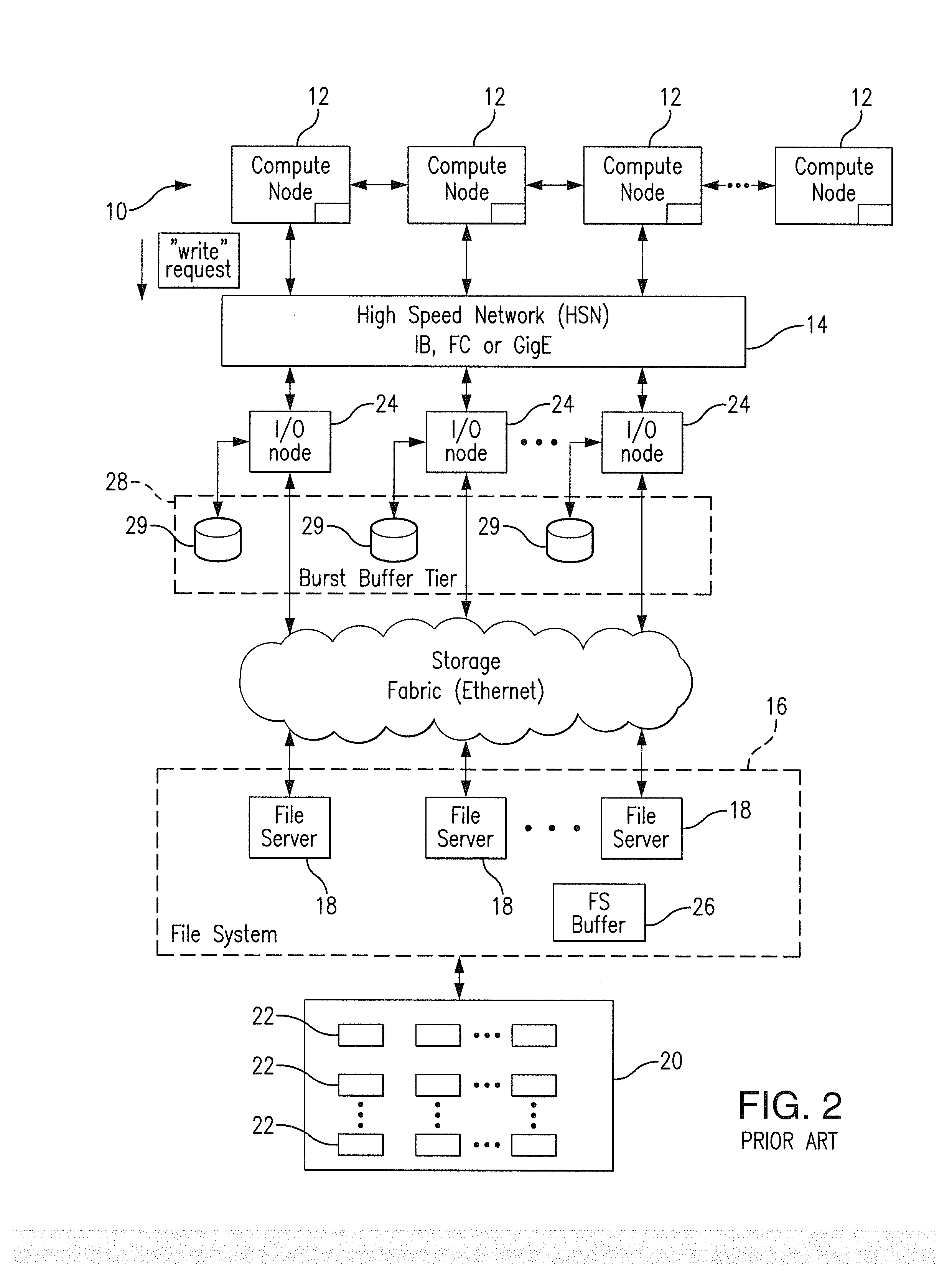Method and system for data transfer between compute clusters and file system
a data transfer and file system technology, applied in the field of method and system for data transfer between compute clusters and file systems, can solve the problems of large application workload, unusual effect of application, and inability to achieve application-specific data, and achieve the effect of efficient data migration
- Summary
- Abstract
- Description
- Claims
- Application Information
AI Technical Summary
Benefits of technology
Problems solved by technology
Method used
Image
Examples
Embodiment Construction
[0087]Referring to FIGS. 5-6, the system 50 of the present invention includes a number of compute (or client) nodes 52. The compute nodes may be arranged in computing groups, or compute clusters, to perform complex computations of various types. The operation of the compute nodes depends on the system application. They may function as servers, super computing clusters, etc., and have the capacity to “write” by outputting data to, as well as “read” data from, an external memory or any other data storage device. In the present description, the above-presented devices will also be intermittently referenced further as data generating entities, or computing architectures.
[0088]The compute nodes 52 are connected through a high speed network 54 to File Servers 56 which manage data migration from and to the computer nodes 52. The ratio of the computer nodes 52 to the servers 56 may in some cases be in excess of a thousand.
[0089]During the Input / Output (I / O) cycle of the computer nodes' oper...
PUM
 Login to View More
Login to View More Abstract
Description
Claims
Application Information
 Login to View More
Login to View More - R&D
- Intellectual Property
- Life Sciences
- Materials
- Tech Scout
- Unparalleled Data Quality
- Higher Quality Content
- 60% Fewer Hallucinations
Browse by: Latest US Patents, China's latest patents, Technical Efficacy Thesaurus, Application Domain, Technology Topic, Popular Technical Reports.
© 2025 PatSnap. All rights reserved.Legal|Privacy policy|Modern Slavery Act Transparency Statement|Sitemap|About US| Contact US: help@patsnap.com



